Stubbornness as a useful concept in Wardley Mapping
If you need a primer on what on earth this post is about, I suggest the introduction at Learn Wardley Mapping.
It’s a fundamental principle of Wardley Mapping that everything evolves through supply and demand competition.
Looking at Mapping through the lens of 80s and 90s sociology of innovation literature, it’s not clear to me that evolution is the best, or most complete, or clearest, metaphor for what is happening when something moves rightward on a Map.
I came across this recently when teaching a workshop where I used some ideas from Mapping. The participants were looking at a situation that involved the use of paper forms to gather information from customers.
Where do paper forms belong on a Map?

Obviously it depends, so for this example, imagine there is a paper form that is part of a long-established government department process. The process is essential to the function of the department. The form is the only way that the department is allowed to collect a very specific piece of information from the public. The forms are professionally printed, are well typeset, and are updated as usability problems are found. There is a process for distributing the forms to all relevant government shopfronts in the state. Processing the forms is the job of several people in the department. There are clear processes for managing data entry, error correction and data management.
Using the cheat sheet for evolutionary characteristics, this paper form sits at Stage III or Stage IV. But that seems wrong. It’s a paper form and it’s (only just) 2020. One way to more accurately capture what’s going on is to introduce more components to the Map. If we introduce practices, we get this:
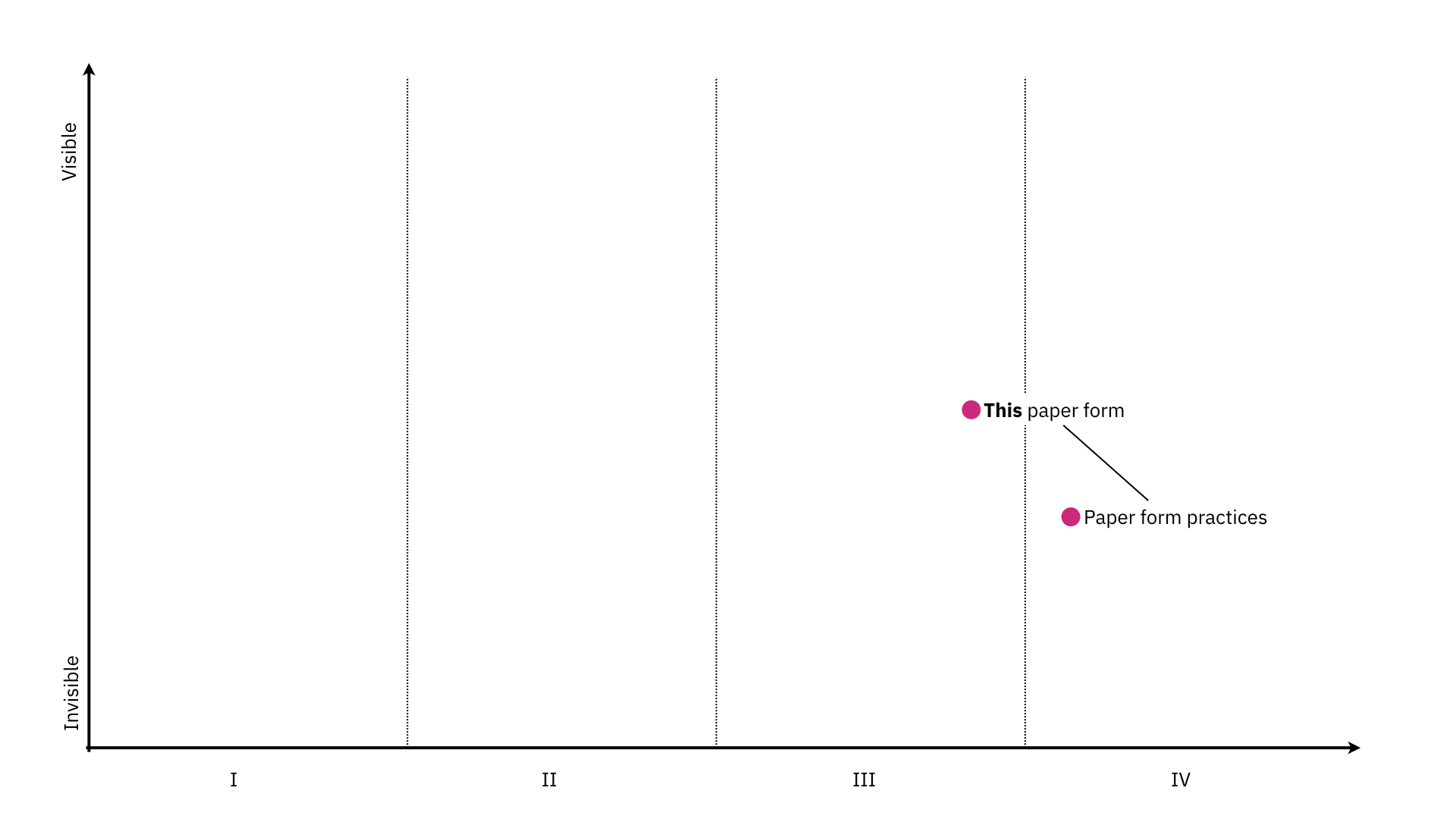
And yet this fails to capture what’s supposed to be going on with the X-axis in evolutionary terms.
Something more like this, where the form is at Stage I and the practices are more evolved seems more like what the X-axis is intended to capture.
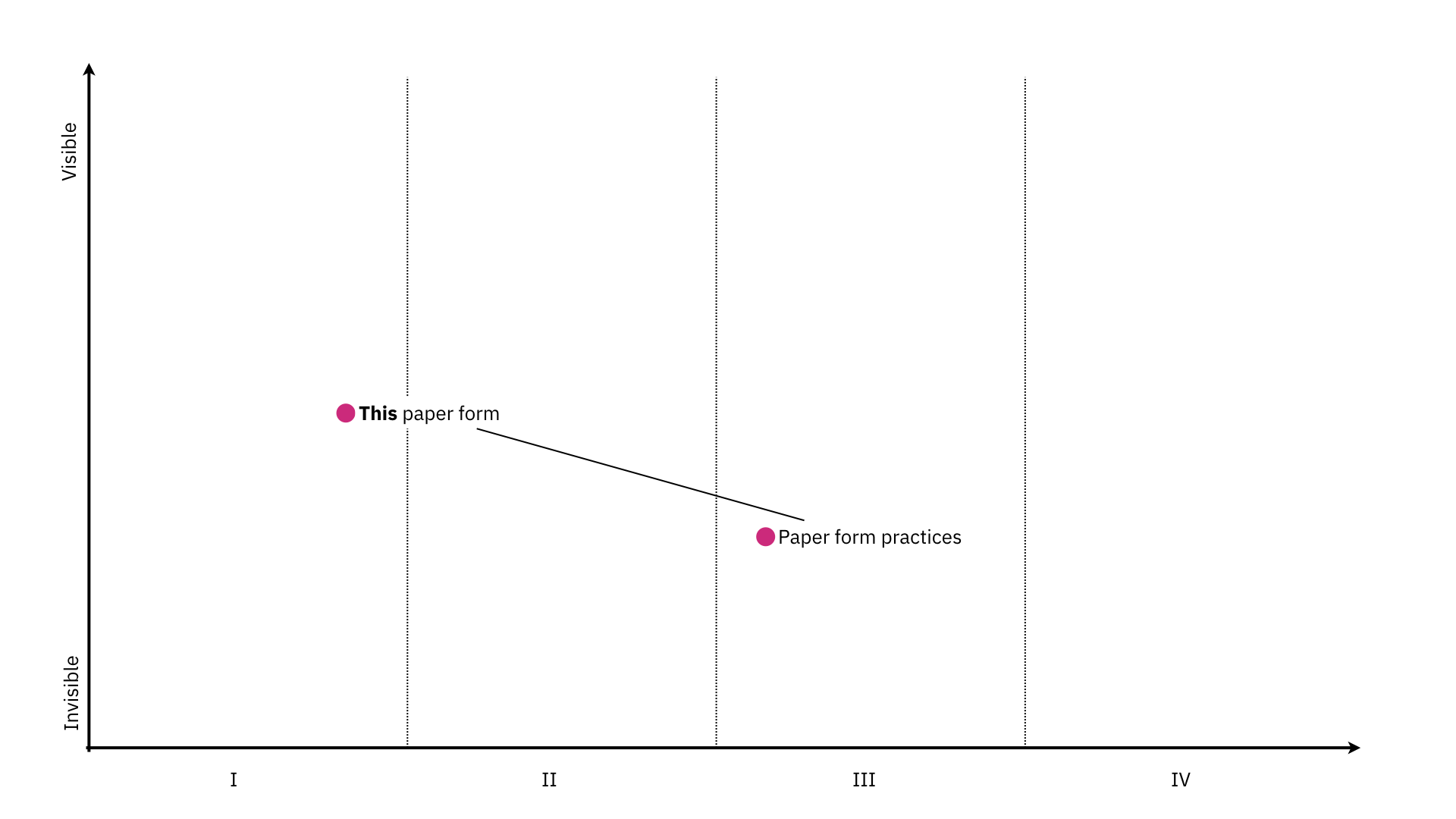
Suppose we do some game-play and evolve the paper form into a digital form. We should see the form and practices move from left to right. Digital forms are more evolved that paper forms, right? But no-one in the department knows how to manage digital forms, so the form management practices go left.
Here’s a naive Map, where we assume that the paper form is “not evolved” and that digitising it makes it “more evolved”.

In this map, though, we hit a weird snag where the practices for managing a digital form are less evolved in the department than the practices for managing the paper form.
There’s two ways to make a more “correct” version of this change. In the first version, we indicate that the form and practices both move to the right through some inertia between Stages.
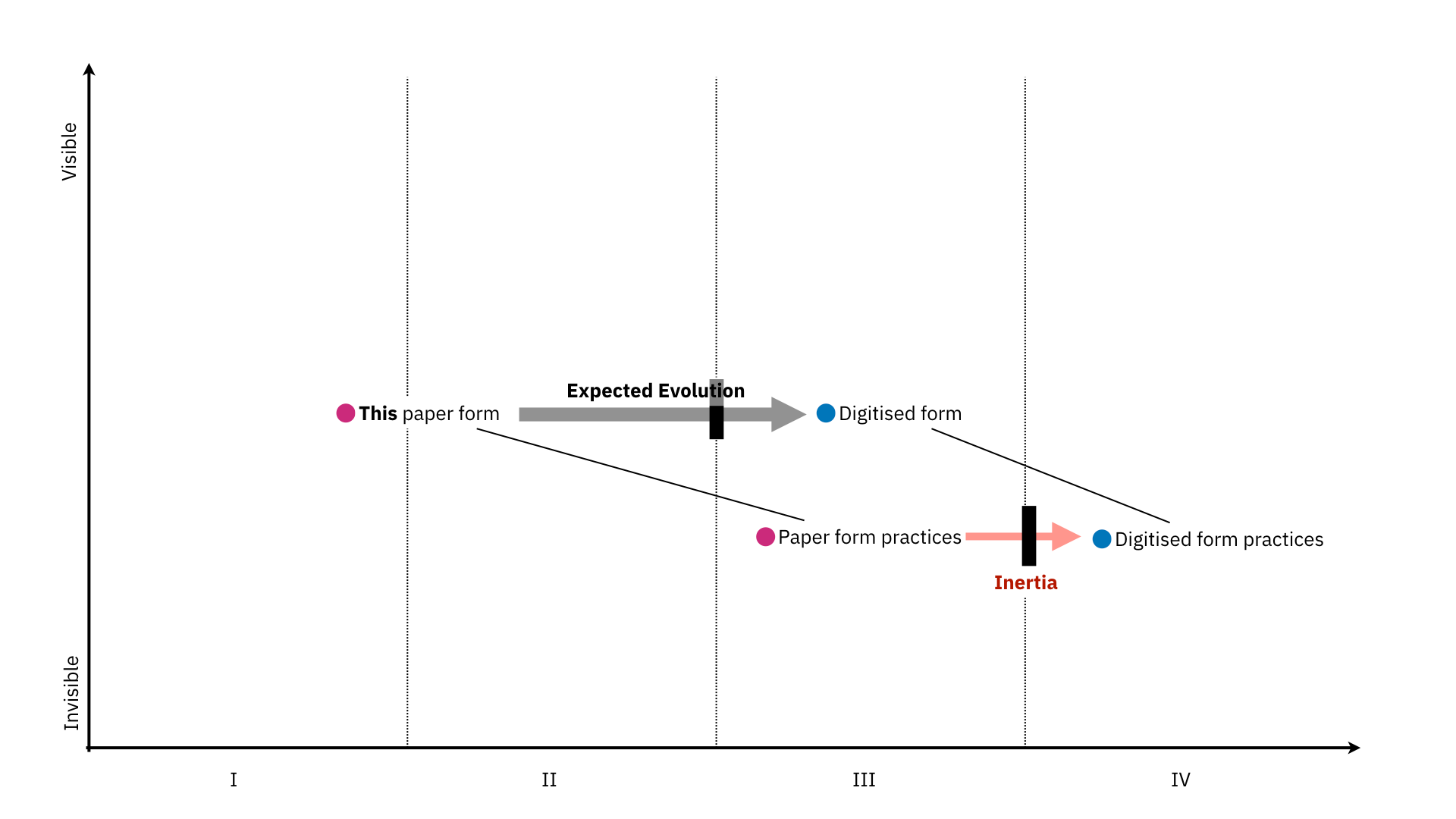
The other way to make a “correct” version is to show both the form and practices moving left (and up) before co-evolving.
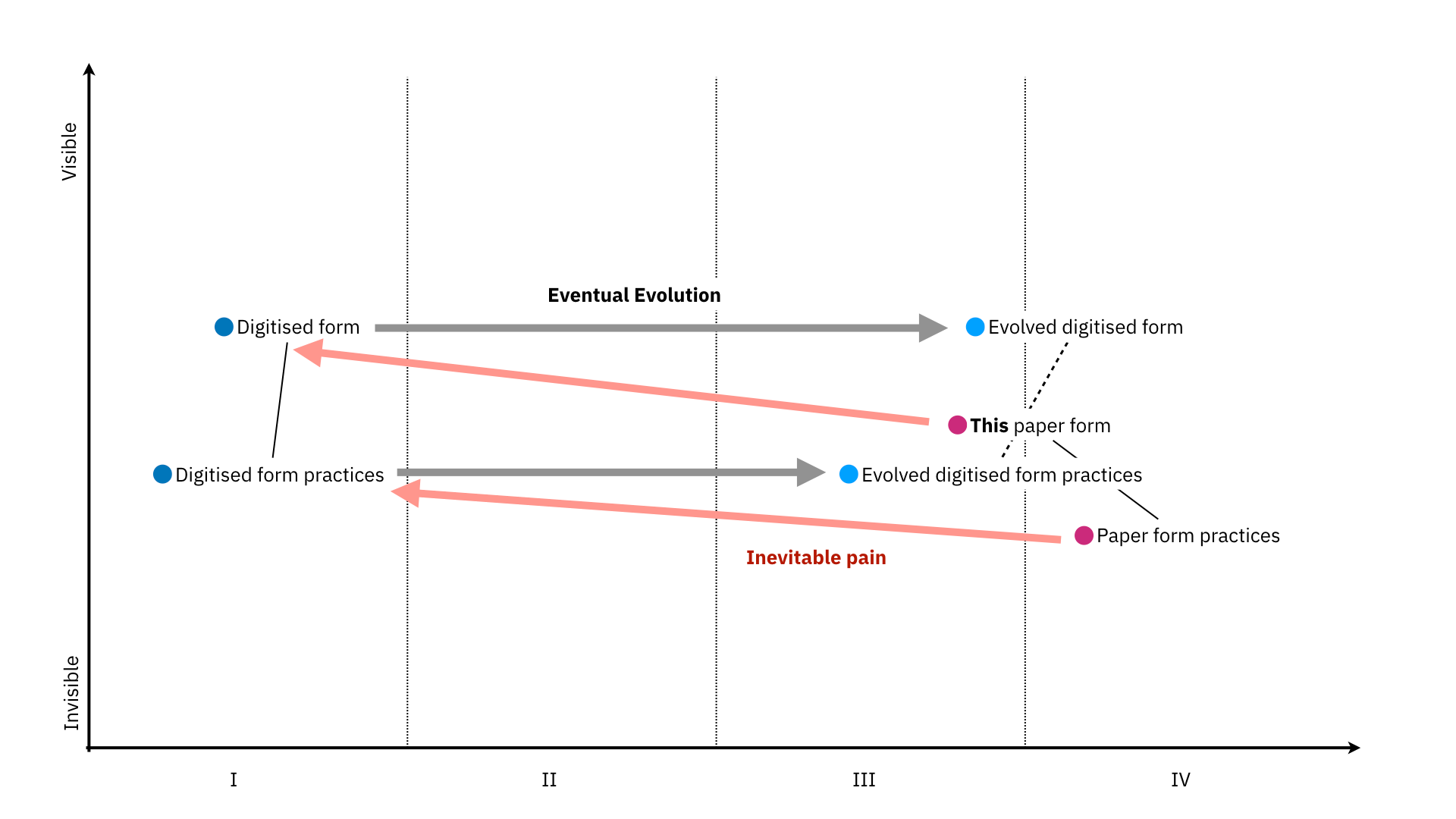
That’s probably a fair representation of what could happen. It doesn’t sit well with me, though.
Let’s get Latourian
The paper form and its associated practices are undoubtedly connected to a wide range of other elements. Some of those elements are more evolved and some are less evolved. Some are connect to multiple other elements and some are less well connected.
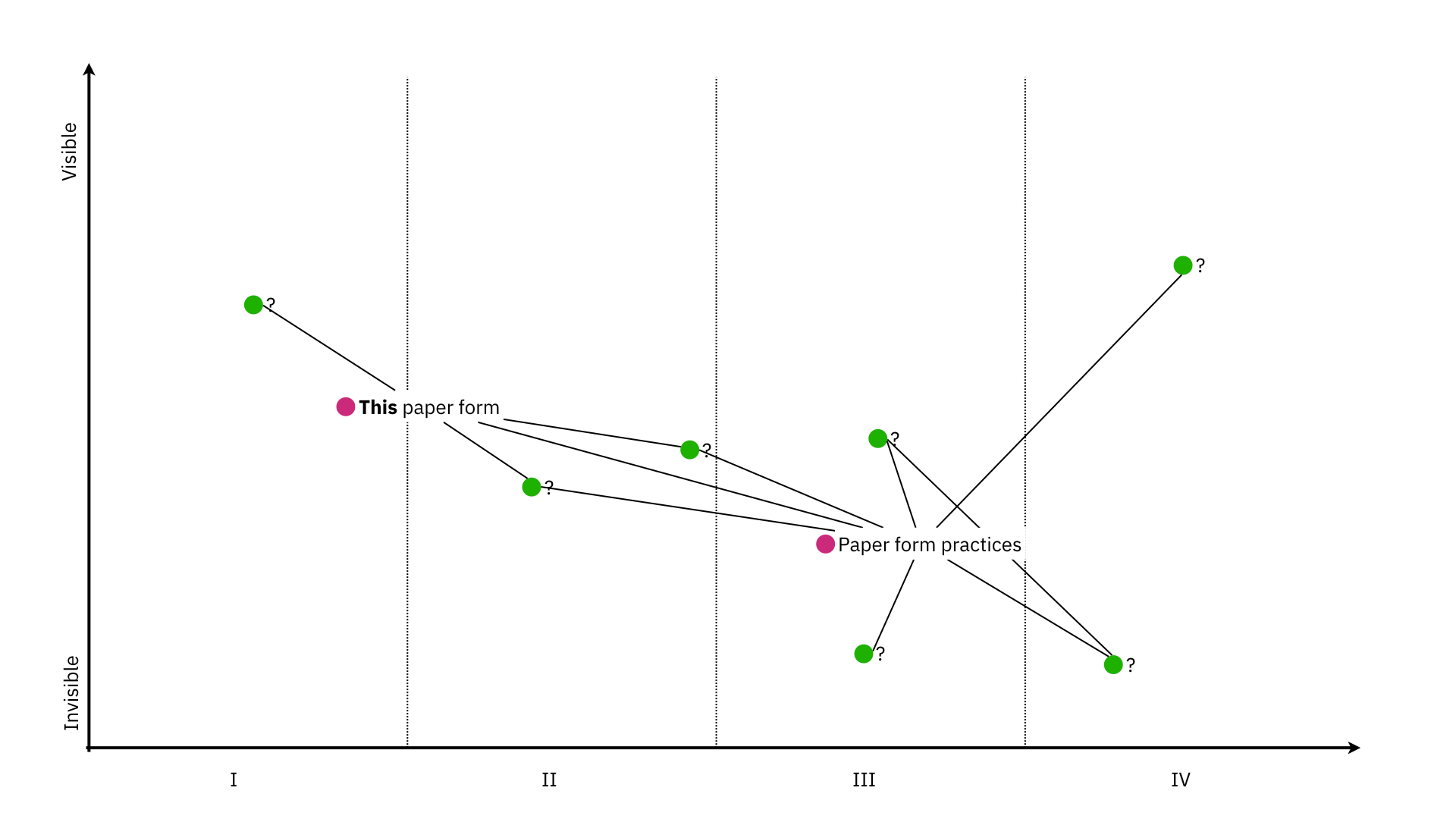
In the sociology of innovation literature, the number and strength of those connections is important — more important than the elements themselves! They’re important because they show how the network of elements is held together.
If the network has lots of elements, all firmly connected to each other, the network is strong but potentially brittle. Someone who is interested in maintaining the network probably doesn’t have to do much to sustain the connections. One word that’s used for these kind of connections is obdurate which means “refusing to change one’s course of direction”. This kind of obdurate network is potentially brittle because if too many connections are severed, or if a well-connected element fails, the network collapses.
If the network has lots of elements all tenuously connected, the network is weak but potentially flexible. Someone who is interested in maintaining this network has to put in a lot of effort to sustain the connections. However, if one element fails, because it’s weakly connected, it’s easy to substitute a new different element. I’d call this a more plastic or ductile network.
According to people like John Law, Madelaine Akrich, Michel Callon and Bruno Latour, moving an element around, or replacing it, is easier when that element isn’t well connected and is harder when an element has many connections. That means it’s possible to use the obdurate/plastic terminology for individual elements too. An element with lots of connections is more obdurate; an element with few connections is more plastic. You could create metrics from this if you were so inclined. In mapping terms:
If one element A is connected to only one other element B, the difficulty of replacing B with C is related to how strongly A resists disconnecting from B and how strongly A resists connecting with C. If you don’t completely sever the A-B connection and simultaneously sufficiently strengthen the A-C network, the inertia in the network could snap it back to A-B.
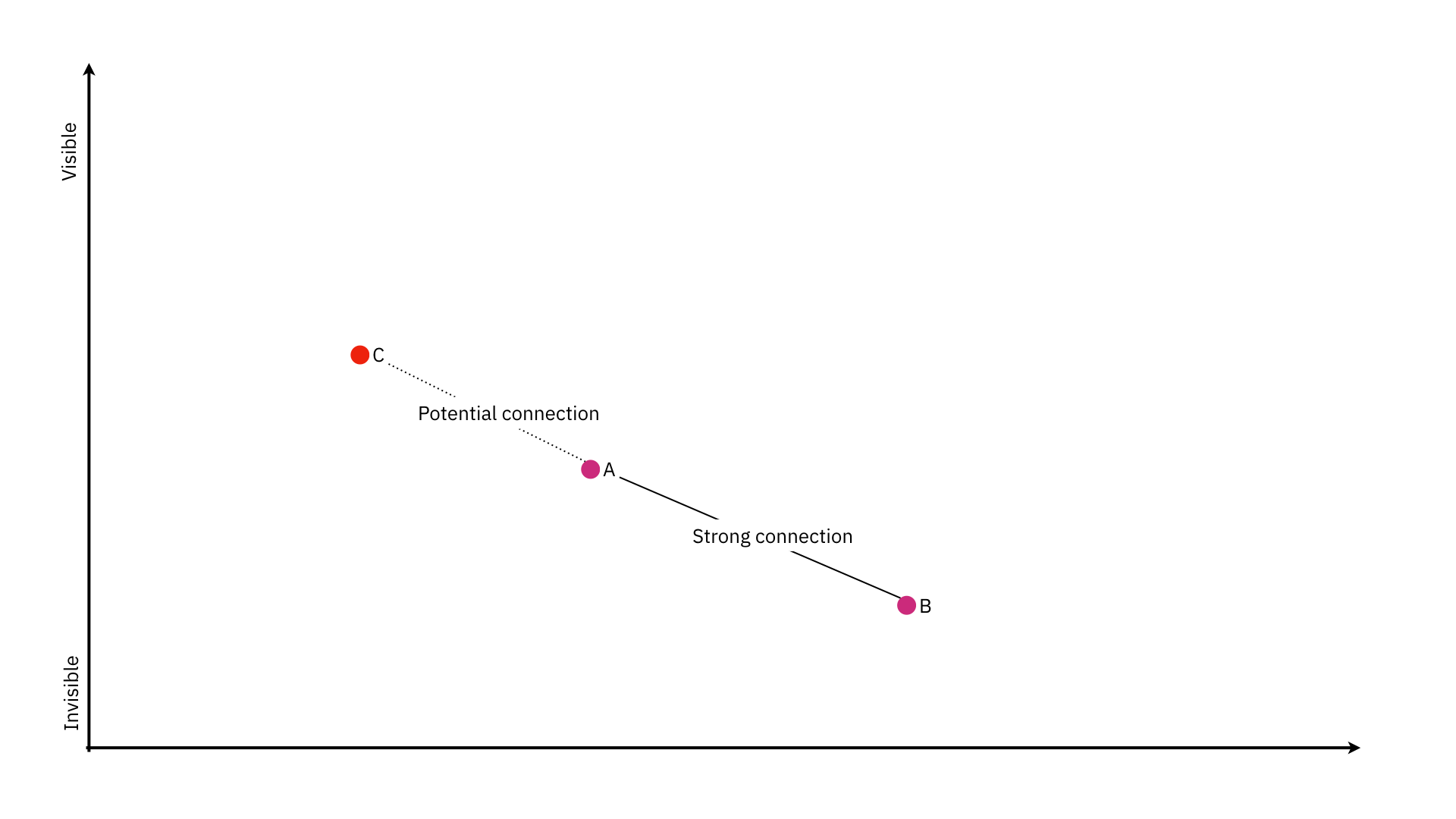
Scaling up to more complex arrangements of elements, some of which are strongly connected and some of which are weakly connected, obviously leads to far more complex situations.
What’s wrong with evolution?
Nothing’s wrong with the Mapping idea of evolution, but I think the strength of connection between elements, and the relative ease with which an element can be moved or replaced is more important than anything that can be said about the evolutionary status of any one individual element.
Lots of highly evolved elements are also highly obdurate. Lots of less well evolved elements are more plastic. But sometimes, the concepts don’t match up. The paper form and its associated practices are highly obdurate. Whether they’re highly evolved seems harder to say.
If the rightward-ness of elements on a Map show evolutionary status, the question I have is from where does the judgement of evolutionary status get made? (I know it’s a judgement call. All Maps are wrong, some Maps are useful. etc.) If rightwardness is about obduracy, or resistance-to-change, can we express other things with Maps?
I’m not at all convinced that the evolutionary axis should be re-termed the obduracy axis. I am convinced obduracy is a useful concept.